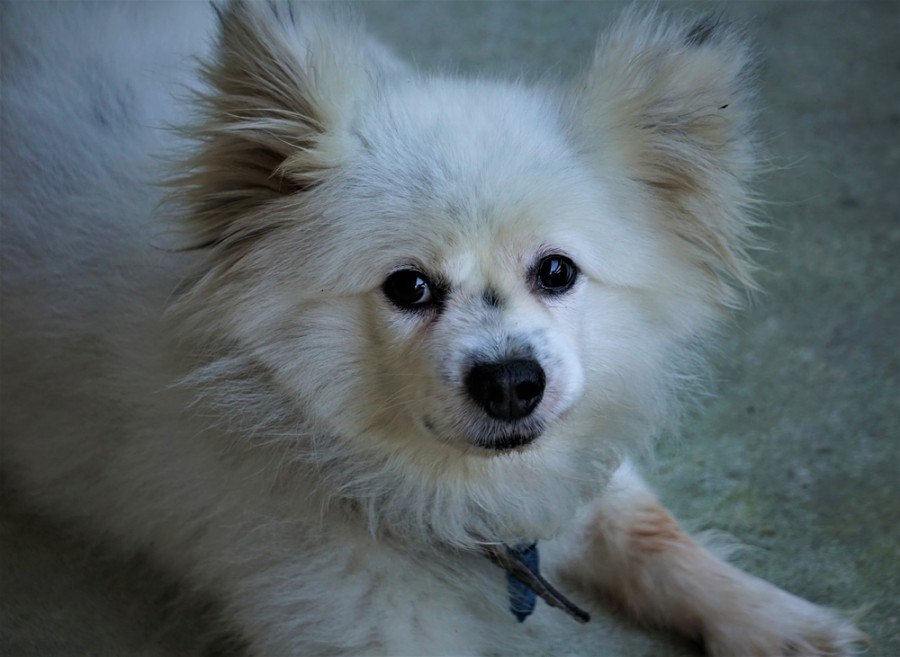Corgi Growth & Weight Chart: Puppy to Adult (With Pictures)

Updated on
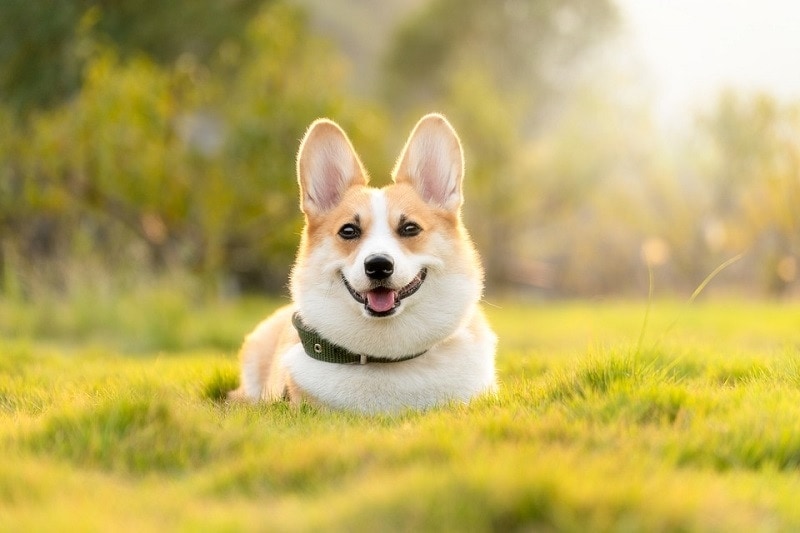
The charming, short-legged little Corgi is quite a popular small breed hailing from Wales. There are two variations: the Pembroke Welsh Corgi and the Cardigan Welsh Corgi. They have striking similarities, but there are some differences, too—like their markings and the fact that Cardigan Corgis have tails.
If you have just welcomed an adorable Corgi pup to your home, you’re probably educating yourself on all-things-Corgi like a wonderful owner. When it comes to weight and growth, we’re going to discuss just what to expect as your little guy or gal ages.
Corgi Growth and Weight Chart
Below is a chart to show how both the male and female Corgi grow. Keep in mind each dog is going to develop differently, so actual weight at different life stages can vary slightly.
Corgi Puppy Growth and Weight Chart (Male)
| Age | Weight Range | Height Range |
| 8 weeks | 8–10 lbs | 4”–6” |
| 3 months | 10–13 lbs | 5”–7” |
| 6 months | 17–24 lbs | 7”–8” |
| 9 months | 19–22 lbs | 9”–10” |
| 1 year | 20–30 lbs | 10”–12” |
| 2 years | 22–31 lbs | 10”–12” |
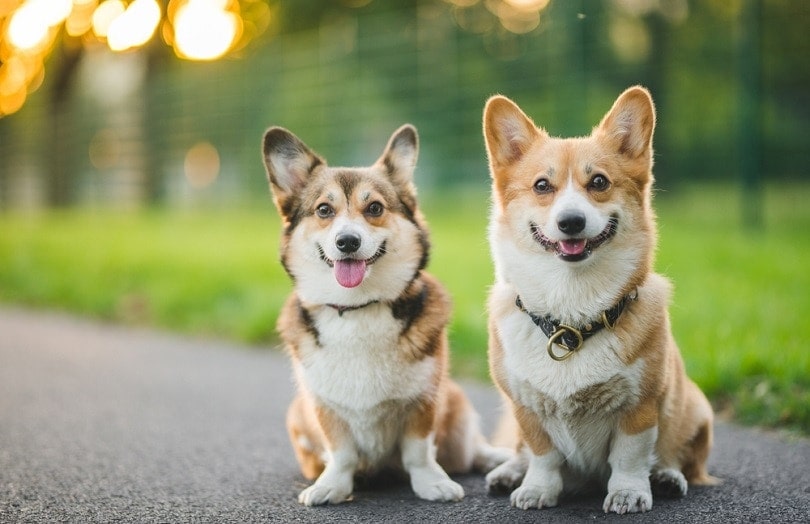
Corgi Puppy Growth and Weight Chart (Female)
| Age | Weight Range | Height Range |
| 8 weeks | 7–9 lbs | 4”–6” |
| 3 months | 9–11 lbs | 5”–7” |
| 6 months | 17–21 lbs | 7”–8” |
| 9 months | 18–20 lbs | 9”–10” |
| 1 year | 20–26 lbs | 9”–11” |
| 2 years | 22–28 lbs | 9”–11” |
You need to take good care of your pet while they are growing, so you can use our calculator tool to help you know how much to feed your pup and keep their well-being:
The exact amount of calories an individual animal needs to maintain a healthy weight is variable and influenced by many factors including genetics, age, breed, and activity level. This tool is meant to be used only as a guideline for healthy individuals and does not substitute veterinary advice
 When Do Corgis Stop Growing?
When Do Corgis Stop Growing?
Generally, Corgis stop growing at roughly 1 year of age. But it isn’t unheard of for a Corgi to grow for 2, or even 3 years. Some Corgis have different growth rates than others and are slower to mature.
Also, Corgis are quite lanky up until around two years of age. After that, they start to fill out all over their bodies, giving them a stockier appearance. Slight weight gain is standard after they are fixed as well.
Mentally, things can be a bit of a different story. It’s pretty typical for most dogs, including Corgis, to not officially end the “puppy phase” for roughly two years. Sometimes, spaying or neutering can also affect behavior. But occasionally, Corgis stay spunky for many years before they calm down.
How Does Neutering/Spaying Affect My Dog’s Growth?
Spaying or neutering your dog should be on your list of to-dos, but how soon is too soon? There are rumors that opting for this surgery too early causes some effects on your Corgis growth, but it is true?
According to phys.org, spaying and neutering offer many health benefits to the animal. However, early surgery has been linked to growth issues. It can increase the time the bones grow, making the animal taller than they should be.
There is no definitive answer on just how much a dog is affected—and it can vary from dog to dog. Some veterinarians recommend spaying or neutering around 6 months of age. Others say to wait until the dog is fully grown—around 2 years.
Dangers of Growing too Quickly or Stunted Growth
There could be bigger problems if your pup grows too quickly or slowly. Growth disorders can be from a few factors—from genetics to overeating. To keep your Corgi growing on par with their age, make sure you follow diet portion recommendations.
Risks of Growing Too Quickly
- Osteochondrosis—this condition happens mostly in large breed dogs, but it can happen to any canine growing too quickly. Rather than turning to bone, some joints remain as cartilage, which turns into a flap instead.
- Hip Dysplasia—this disorder is caused by the hip joints and bones rubbing together. Typically, the deterioration doesn’t start for several years. However, your vet can test your dog beforehand to see if they are at a particularly high risk for developing this condition.
- Skeletal Abnormalities—many different abnormalities from birth can cause puppies to grow abnormally. You can usually get ahead of the game by taking your puppy for wellness vet checkups.
Reasons for Growing Too Slowly
- Poor diet—if you’re feeding your dog too little, it can severely impact their growth, especially in youth. Signs of a poor diet include a brittle coat, bad breath, and abnormal bowel movements.
- Worms—worms can cause food not to absorb or digest correctly, which causes bloating and can lead to slow growth.
- Portosystemic Shunt—otherwise known as a liver shunt, this condition is a birth defect that can affect a puppy’s growth.
 Growth Distinctions of Different Corgis (Cardigan and Pembroke)
Growth Distinctions of Different Corgis (Cardigan and Pembroke)
There isn’t much of a difference between the Pembroke and Cardigan Corgis. They look extremely similar and their personalities are on the same wavelength. However, when it comes to size, they have a bit of a different variation.
Pembroke
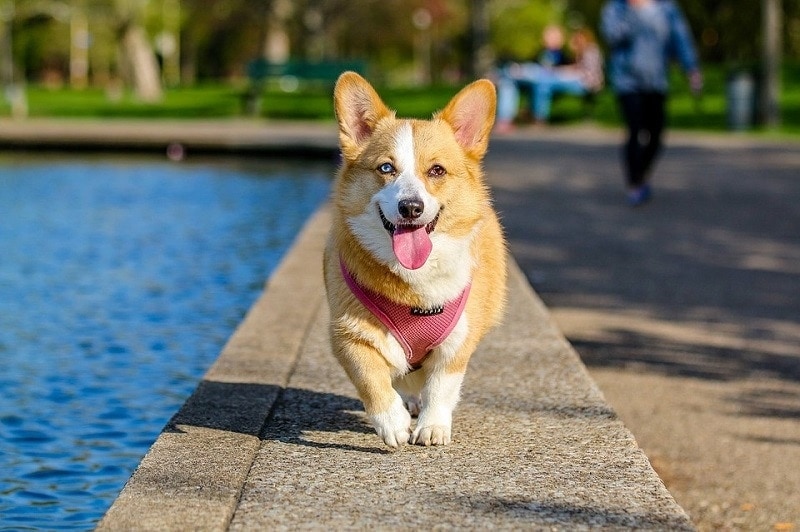
Pembroke Welsh Corgis have docked tails and rectangular shapes and smaller ears than their Cardigan cousins. Aside from their physical differences, they also weigh slightly less. A full-grown male Pembroke Corgi weighs approximately 30 pounds. A female Pembroke weighs roughly 25 pounds.
Cardigan
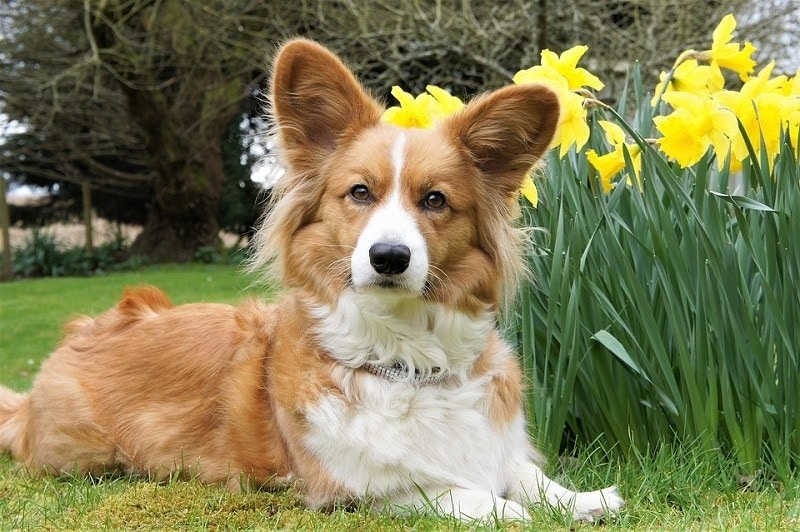
The Cardigan Welsh Corgi has larger, pointier ears and a more oval-shaped, slanted body. They also have long fox-like tails. They weigh more than the Pembroke—adult males weigh up to 38 pounds while females weigh up to 34 pounds.
 Top 4 Corgi Facts
Top 4 Corgi Facts
1. There are two kinds of Corgis: Cardigan and Pembroke.
They come from different parts of Wales. While the American Kennel Club (AKC) lumped them together initially, they now recognize these two as separate breeds due to their slight differences.
2. Corgi means “dwarf dog”
And you can probably guess how they got that name!
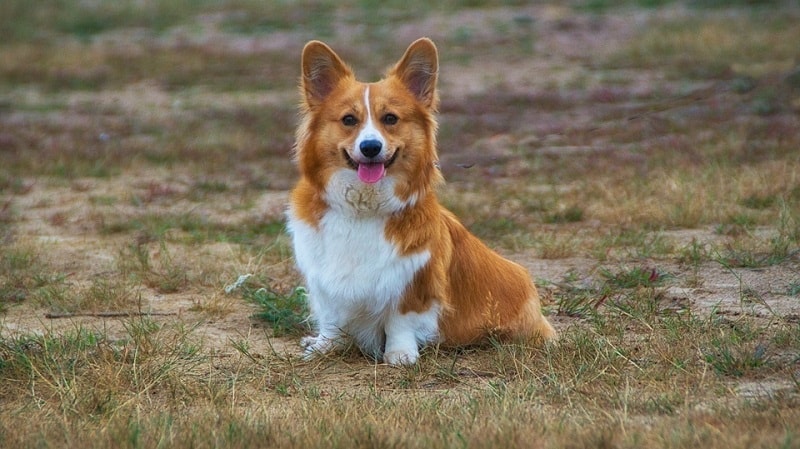
3. Pembroke Corgis are born without tails, or with small, stubby tails.
If they are born with a full tail, many breeders dock it since it’s considered a flaw in the breed. Oppositely, Cardigans have tails entirely intact.
4. They have unsuspecting and burley cousins!
You probably could never tell just by looking, but Corgis are related to Huskies.
 Conclusion
Conclusion
As your Corgi grows, the number one most important part of the process is steadiness. You don’t want them to grow too quickly or not fast enough. If you feel like your pup is growing too rapidly or slowly, see your veterinarian to discuss concerns or underlying causes.
Otherwise, enjoy the growing process with all of the quirks, excitement, and stress that come from raising a Corgi. It’s all part of the gratifying process of owning a dog.
Featured Image Credit: lucioliu, Pixabay

 When Do Corgis Stop Growing?
When Do Corgis Stop Growing?
 Top 4 Corgi Facts
Top 4 Corgi Facts Conclusion
Conclusion


